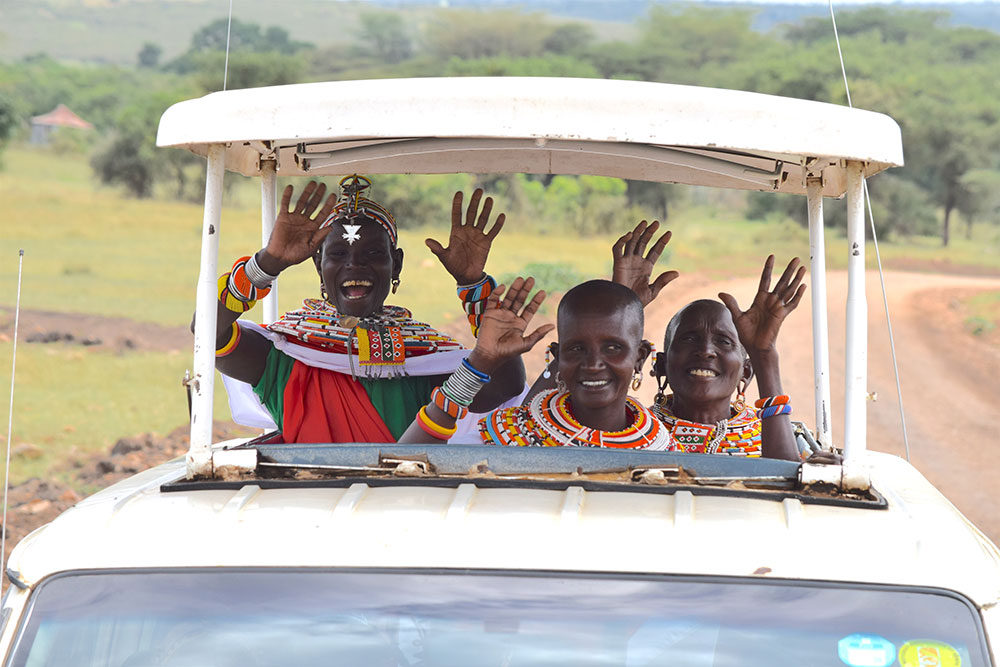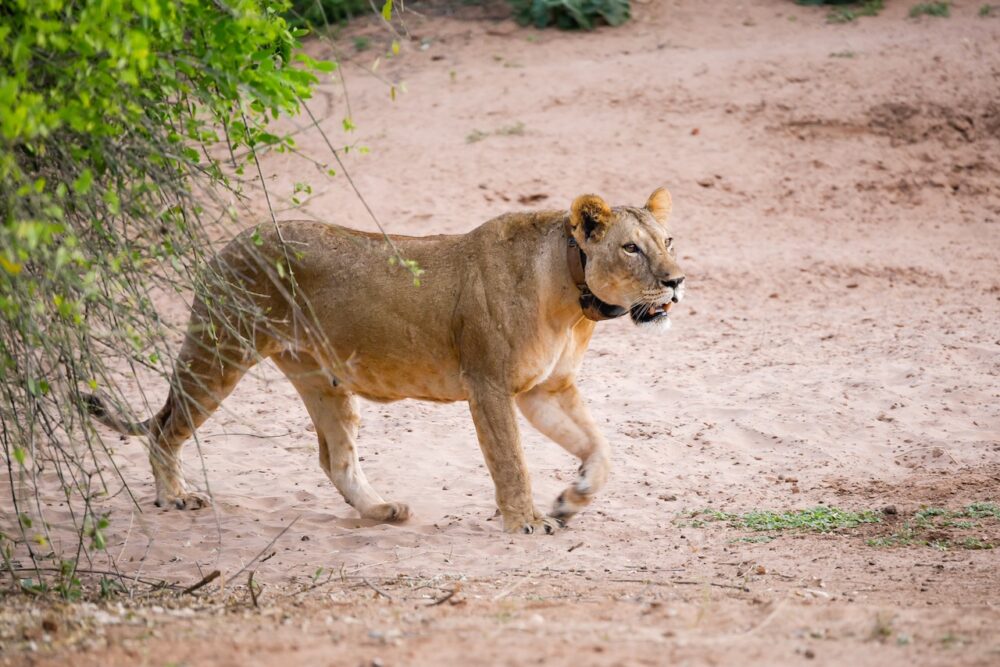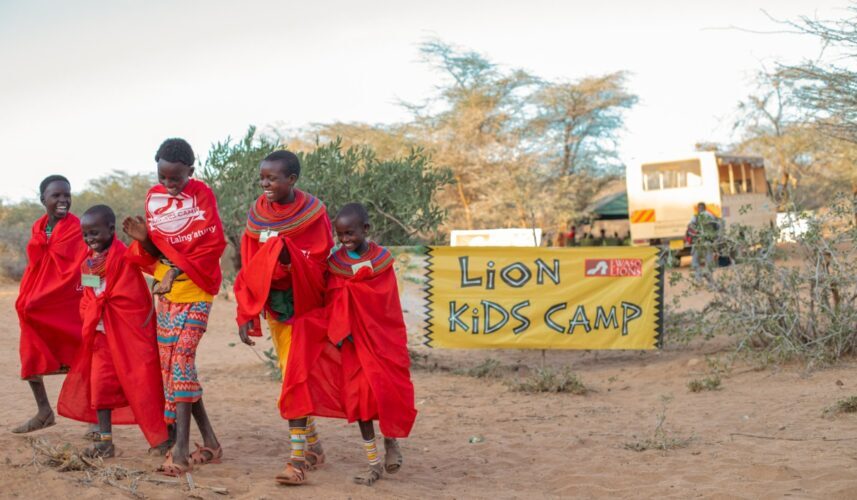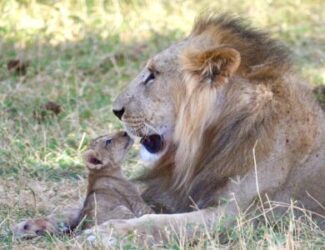300 miles, five new wildlife species, and of course The Great Migration. The Mama Simba trip to the Maasai Mara held a lot of firsts, and a lot more surprises. It was the longest journey of their lives, most of them not having gone more than 30 miles away from home.
As they approached the Mara, giraffes began to appear on the sides of the road. But the ladies were far more mesmerized by the grass: luscious, green, endless. Nalmarai looked wistfully “Will you let me out so I can walk in it?” It was more grass than they had ever seen.
Once the ladies settled into their hotel where they would be sleeping in comfortable beds and having sumptuous meals later on, they were whisked away to Enonkishu Conservancy, Enonkishu meaning place for healthy cattle. At the Mara Training Centre there, they learnt about how the conservancy manages their grasslands from Musa Kiseer, the Forage Assessment Manager.
On the way back, Conservation Programme Assistant Evanson Kariuki, christened Nkobikobi meaning “fast planner” or “straight” by the ladies, got the great idea to take the ladies in to see his old friends at the Kenya Wildlife Service nearby. They soon found out the secret: they were going to a rhino sanctuary. The ladies got up close with the two rhinos, whom to them were mythical creatures. Masulani later said, “Today I touched the heart of a rhino like I would touch a cow.”
The game drive the next day was the real highlight of the trip: a chance to see the Great Wildebeest Migration. At the gate, the ladies met traditional Maasai women, with whom they share a common language. The Maasai women were awe-struck by the Samburu women’s beautiful neck pieces, and even more enthralled when Munteli hopped into the drivers’ seat and drove the ladies into the park. Munteli insisted on driving the entire day, leaving all who saw her dumbfounded. They simply could not believe that a traditional Samburu woman was driving!
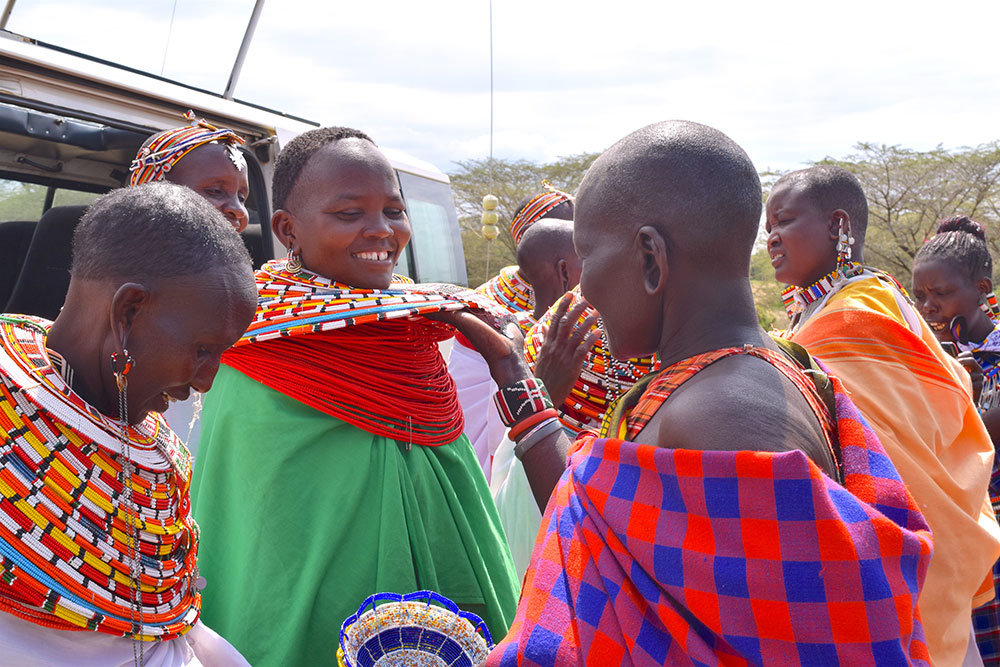
© Ewaso Lions
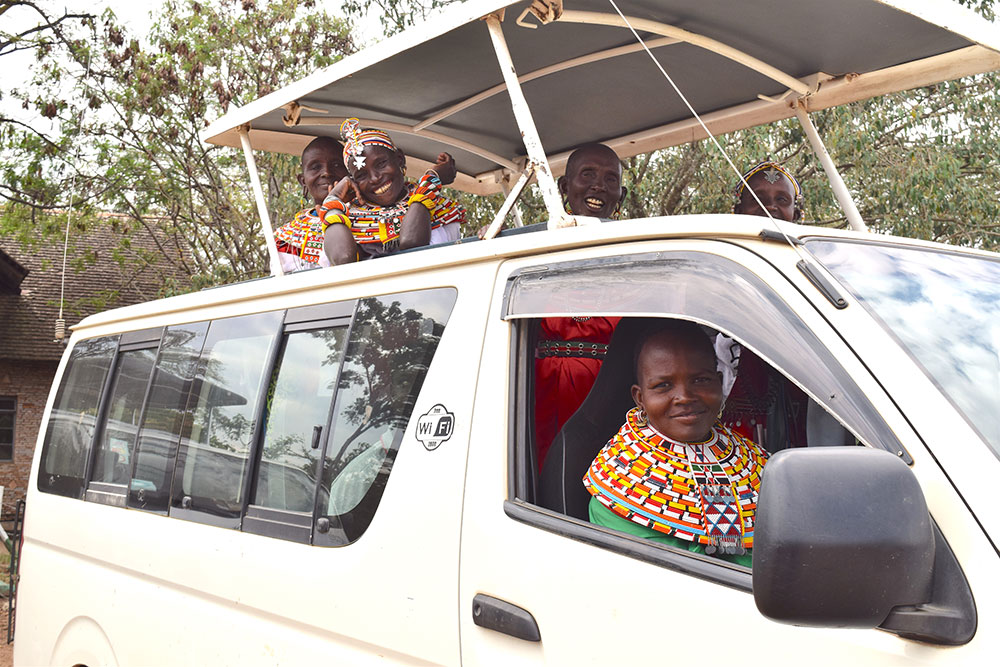
© Ewaso Lions
Soon, they were surrounded by wildebeest, topi and zebra as far as they could see. Witnessing the largest congregation of megafauna in the world was breathtaking, each animal driving towards the great Mara river.
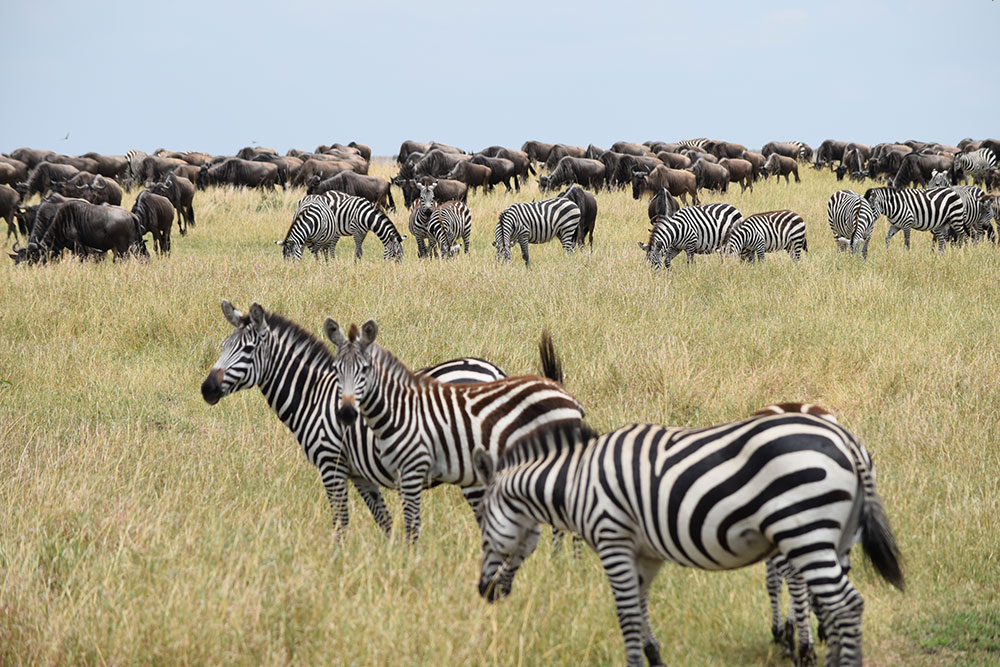
© Ewaso Lions
Despite their wonder, the Mama Simba ladies spotted challenges faced in the ecosystem. As they drove back to the hotel, Mparasaroi lamented the amount of fencing everywhere. “This land has been cut up,” she said, and later went into a diatribe about how terrible the effects would be for the ecosystem and wildlife movement.
After all the wildlife watching, the ladies got a chance to see the work of the people of the Mara. First, meeting the women of the Maasai Mara Wildlife Conservancies Association where they sang together and talked about what they each do. They then hopped across to Maa Trust where they saw incredibly intricate beadwork done by ladies from the Mara. And finally they went to the Mara Predator Conservation Programme to see how lions and other carnivores are conserved in the South of Kenya.
As the day drew to a close, the ladies requested a final game drive. Deep in the heart of Mara North Conservancy, they had their most magical moment. They stumbled on a pride of lions, 22 strong. The whole earth stood still as the ladies blessed the lions, and just sat with them for what seemed like an age.
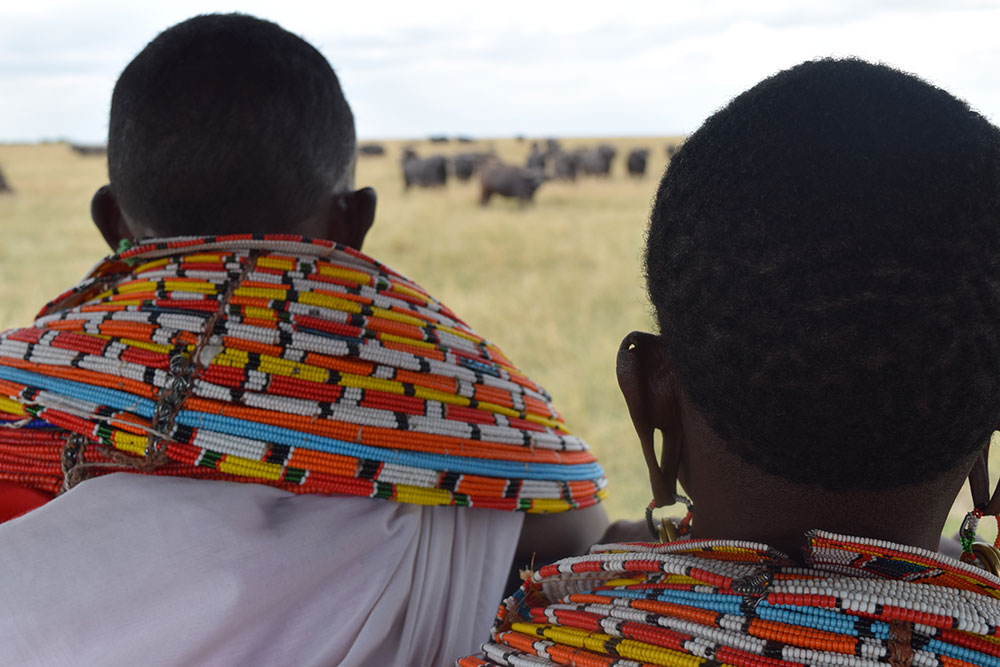
© Ewaso Lions
The Mama Simba ladies had only been away a few days, yet, their attitude, confidence and outlook on their role had changed drastically. We knew this because the next day, back in Samburu, Nadala’s sub adult was killed, our first lion loss of the year. The ladies were informed, and they were devastated. Having seen a pride of lions for the first time, you could see how aware they were now of how precious the solitary lions of Samburu were. After sadness came fury. “How can this happen?” they asked. “We must have a meeting!” The ladies began planning the next meeting they wanted to hold in Samburu, and even called conservancy managers.
Emboldened and empowered by this trip, we can’t wait to see what the future holds for the Mama Simba ladies as they look at life and lions with fresh eyes.
For this trip, cannot thank enough our amazing supporter Singleton Rankin and World Women Work who made this incredible trip possible. Heaps of gratitude go out to Angela Sanau Paswa of MMWCA who organized everything for the women in the Mara, far beyond her call of duty, and of course, all the organisations who gave their time to take these women through all they do, and to Kenya Wildlife Trust Executive Director Dr. Irene Amoke for linking us all up.


